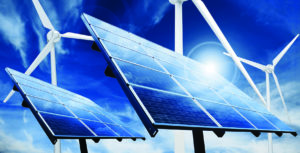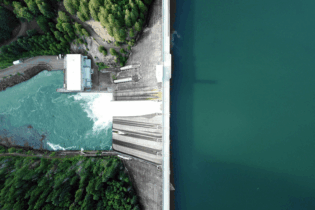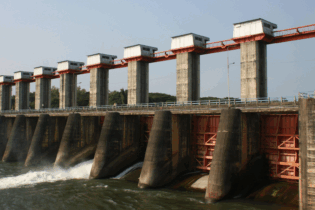Eskom is expected to close four power stations with 8 800 MW of installed capacity over the next 10 years, which will cost 30 000 direct jobs and have a multiplier effect of potential loss of 70 000 indirect jobs mainly in the transport and storage sectors.
It is become increasingly clear that South Africa needs a renewable power solution, and the team at Genergy offer some insight into what South Africa might look like powered 100% by renewable energy. Genergy argues that Eskom must be allowed to develop its own renewable energy resources in competition with others operating in the same field. And if the government wants to subsidise renewable energy, Eskom should get the same advantage. So, if Eskom was allowed to develop its own renewable energy resources and more private organisations invested in the renewable power generation, what would South Africa look like powered 100% by renewable energy?1. Big on wind and solar
In future, the bulk of our electricity will come from the most affordable technologies: wind and solar photovoltaic (PV). In areas with the best renewable resources, big wind and solar projects connected to transmission lines will generate electricity to power South Africa’s industry, transport, cities and exports. Modelling by Genergy suggests that solar and wind generation could supply up to 90% of South Africa’s electricity needs, with the remaining 10% generated by smaller and more experimental renewable energy sources as technological developments allow. South Africa’s best solar irradiance is in the country’s Northen Cape and its coastal regions have the highest wind potential. These renewable energy zones already have some investment in transmission and distribution, but further investment is required to harvest these amazing resources.2. Many technologies in many locations
South Africa is a vast country and solar and wind farms will be spread across the country, sharing their output, because in the rainbow nation, the sun is always shining or the wind is always blowing somewhere. The supply gaps will then be filled with a range of on-demand renewables and storage, such as concentrating solar thermal with storage, pumped hydro, batteries (grid and domestic), sustainable bioenergy and more. In fact, South Africa is considering doubling the amount of electricity it plans to buy from a proposed multi-billion-dollar hydro power plant in the Democratic Republic of Congo.3. Small, so everyone can benefit
Genergy anticipates that the majority of the country’s future energy generation will be in local and customer-owned in homes, businesses and communities. This means solar panels on every sunny roof, and batteries in households and commercial buildings. In apartment blocks, there will be microgrids powered by solar and batteries. Renters will join community solar projects and landlords will be required to make properties more energy efficient. When you go to the shopping centre and plug in your electric car, it will be shaded by solar panels.4. Demand is as important as supply
Future electricity use will be much more dynamic. When the sun is shining or a gale is blowing, smart software will send a signal to energy users to turn on their pumps and fill up their batteries. When wind generation is low, batteries will be signalled to turn on. This is called demand response and can deliver reliable grid electricity and lower energy bills. A win-win. We will also need to use energy much more efficiently, and more than double productivity. Our houses, buildings, equipment, appliances, transport and industrial processes all need to become more efficient.








